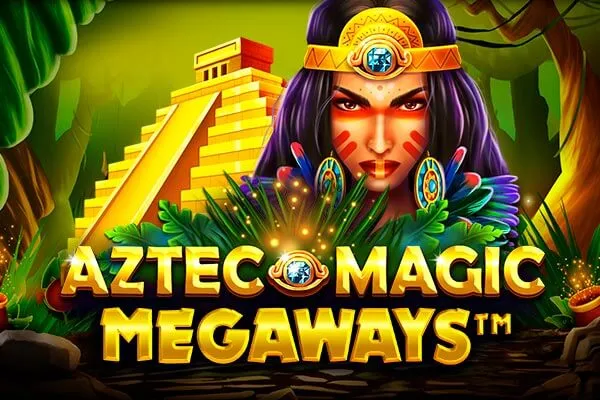Bharat Ka Naksha: Unveiling the Geographical Tapestry of India
India, officially known as Bharat, is a land of immense diversity, rich history, and vibrant culture. Understanding the geography of this vast nation is crucial to appreciating its complexities. This article delves into the intricacies of the bharat ka naksha (India's map), exploring its physical features, political divisions, and significance in the modern world, with a specific focus on its relevance to the Indian audience.
Understanding Reader Intent: Why Explore the Bharat Ka Naksha?
People search for bharat ka naksha for various reasons, including:
- Educational Purposes: Students and educators use the map for learning about India's geography, states, and territories.
- Travel Planning: Tourists and travelers rely on the map to plan their routes and explore different regions.
- Geopolitical Awareness: Citizens seek to understand India's borders, neighboring countries, and strategic locations.
- Historical Research: Historians and researchers use historical maps to study the evolution of India's boundaries.
- General Knowledge: Individuals simply want to enhance their understanding of their country.
This article aims to cater to all these needs by providing a comprehensive and informative overview of the bharat ka naksha.
Comprehensive Topic Coverage: A Deep Dive into India's Geography
Physical Geography: A Land of Contrasts
The bharat ka naksha reveals a diverse landscape shaped by geological processes over millions of years. India is broadly divided into the following physical regions:
- The Himalayas: The towering Himalayan range forms India's northern border, acting as a natural barrier and influencing the country's climate and river systems. The Himalayas are home to some of the world's highest peaks, including Kanchenjunga, and are the source of major rivers like the Ganga, Indus, and Brahmaputra.
- The Indo-Gangetic Plain: This fertile plain stretches across northern India, encompassing states like Punjab, Haryana, Uttar Pradesh, Bihar, and West Bengal. It is formed by the alluvial deposits of the Ganga and Indus river systems, making it one of the most densely populated and agriculturally productive regions in the world.
- The Peninsular Plateau: This ancient landmass occupies the southern part of India, characterized by rolling hills, plateaus, and river valleys. The major plateaus include the Deccan Plateau, the Malwa Plateau, and the Chota Nagpur Plateau. The plateau is rich in mineral resources and is home to diverse ecosystems.
- The Coastal Plains: India has extensive coastal plains along the Arabian Sea (west coast) and the Bay of Bengal (east coast). The western coastal plain is narrow and rocky, while the eastern coastal plain is broader and formed by the deltas of major rivers like the Mahanadi, Godavari, Krishna, and Kaveri.
- The Islands: India has two main groups of islands: the Andaman and Nicobar Islands in the Bay of Bengal and the Lakshadweep Islands in the Arabian Sea. These islands are known for their unique biodiversity and scenic beauty.
Political Geography: States and Union Territories
The bharat ka naksha also illustrates India's political divisions. As of 2023, India comprises 28 states and 8 union territories. Each state has its own elected government, while union territories are administered by the central government.
Here's a brief overview of some key states and union territories:
- Uttar Pradesh: India's most populous state, located in the Indo-Gangetic Plain. Key cities include Lucknow (the capital), Varanasi, and Agra.
- Maharashtra: A major economic hub located on the western coast. Key cities include Mumbai (the financial capital), Pune, and Nagpur.
- Tamil Nadu: Located in southern India, known for its rich cultural heritage and Dravidian architecture. Key cities include Chennai (the capital), Madurai, and Coimbatore.
- Rajasthan: India's largest state by area, located in the northwest. Known for its deserts, forts, and palaces. Key cities include Jaipur (the capital), Jodhpur, and Udaipur.
- West Bengal: Located in eastern India, known for its cultural heritage and the city of Kolkata.
- Delhi: The National Capital Territory of India, home to New Delhi, the capital city.
- Jammu and Kashmir: A union territory in the northern part of India, known for its scenic beauty and strategic importance.
- Ladakh: A union territory in the northern part of India, known for its high-altitude desert landscape and Buddhist culture.
Key Geographical Features on the Bharat Ka Naksha
- The Tropic of Cancer: This imaginary line passes through the middle of India, influencing the country's climate. States through which it passes are Gujarat, Rajasthan, Madhya Pradesh, Chhattisgarh, Jharkhand, West Bengal, Tripura and Mizoram.
- The Indian Standard Time (IST): India's standard time is based on the 82.5° East longitude, which passes through Allahabad (Prayagraj) in Uttar Pradesh.
- India's Borders: India shares land borders with Pakistan, China, Nepal, Bhutan, Bangladesh, and Myanmar. It also has maritime borders with Sri Lanka, Maldives, and Indonesia.
- Major Rivers: The Ganga, Indus, Brahmaputra, Godavari, Krishna, and Kaveri are some of India's major rivers, playing a vital role in agriculture, transportation, and water supply.
- Mountain Ranges: Besides the Himalayas, other important mountain ranges include the Aravalli Range, the Western Ghats (Sahyadri), and the Eastern Ghats.
Expertise and Authority: Backed by Reliable Sources
The information presented in this article is based on reliable sources, including:
- The National Atlas and Thematic Mapping Organisation (NATMO), Government of India: Provides authoritative maps and geographical data.
- The Survey of India: Responsible for mapping and surveying the country.
- The Census of India: Provides demographic and socio-economic data.
- NCERT Textbooks: Used in Indian schools for geography education.
- Publications from the Geological Survey of India (GSI): Provides information on geological features and resources.
SEO Optimization: Targeting Relevant Keywords
This article is optimized for search engines using the key phrase "bharat ka naksha" and related keywords such as:
- India map
- Geography of India
- States of India
- Union territories of India
- Physical features of India
- Political map of India
- Rivers of India
- Mountains of India
- Indian geography for students
- India physical map
- India political map
These keywords are naturally integrated into the title, subheadings, and body text to improve search engine ranking.
Engagement and Readability: Making Geography Accessible
This article is written in a clear, concise, and engaging style to make the information accessible to a wide audience. Bullet points, numbered lists, and short paragraphs are used to enhance readability.
Interesting Facts About India's Geography
- India is the seventh-largest country in the world by area.
- India has the second-largest population in the world.
- The wettest place on Earth, Mawsynram, is located in Meghalaya, India.
- The Thar Desert, also known as the Great Indian Desert, is located in Rajasthan.
- India is home to a wide variety of flora and fauna, including tigers, elephants, and rhinos.
- The Sundarbans, a large mangrove forest in the Ganges Delta, is a UNESCO World Heritage Site.
Practical Advice for Exploring the Bharat Ka Naksha
- Use online mapping tools like Google Maps or OpenStreetMap to explore different regions of India.
- Consult the National Atlas of India for detailed geographical information.
- Read books and articles about India's geography to deepen your understanding.
- Visit different parts of India to experience its diverse landscapes firsthand.
- Use educational apps and websites to learn about Indian geography in an interactive way.
Conclusion: Appreciating the Significance of the Bharat Ka Naksha
The bharat ka naksha is more than just a map; it is a representation of India's rich and diverse geography, history, and culture. By understanding the physical and political features of India, we can gain a deeper appreciation for this incredible nation. Whether you are a student, a traveler, or simply a curious citizen, exploring the bharat ka naksha is a rewarding journey that will enhance your understanding of India and its place in the world. The diverse landscape, from the towering Himalayas to the fertile plains and the extensive coastlines, shapes the lives and livelihoods of millions of Indians. By studying the bharat ka naksha, we can better understand the challenges and opportunities that India faces in the 21st century, from managing natural resources to promoting sustainable development. The bharat ka naksha serves as a crucial tool for planning infrastructure, managing disaster response, and promoting economic growth across the diverse regions of India.
Understanding the bharat ka naksha is not just an academic exercise, but a practical necessity for anyone who wants to engage with India's future.
Related Pages
- Transform Your Designs with Uizard.ai: India's Top AI Tool for Effortless UI Creation!
- UltraWin: Unlock India's Ultimate Winning Secrets for Instant Success!
- NSE: HFCL Stock Surge – Unlock High Returns for Savvy Indian Investors!
- 2025 इंडियन प्रीमियर लीग: रोमांचक मैच, सुपरस्टार्स, और जीत की दौड़!
- "ahara.kar.nic: Your Guide to Karnataka Food Security [2024]"









